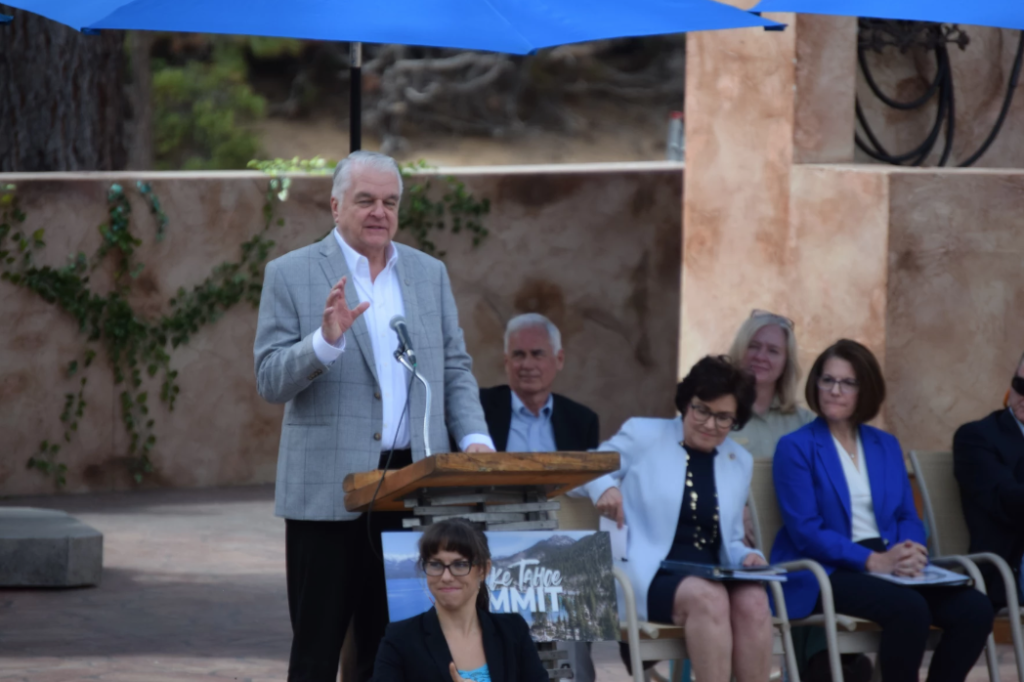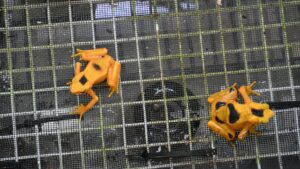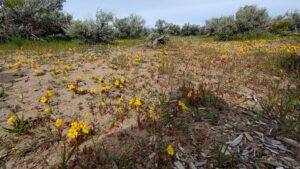
This story was shared with permission from KUNR Public Radio.
A group of leaders and stakeholders convened at the Lake Tahoe Summit on Tuesday to discuss ways to protect the basin. At the event, a renowned local scientist was honored for his work to maintain the health of the lake.
Charles Goldman is known as the “Godfather of Limnology” — or the study of lakes. He was presented with the Dianne Feinstein Tahoe Award for his four decades of work to improve the health of Lake Tahoe. Since his arrival in 1958, he’s witnessed alarming changes to the lake.
“The lakes of the world are all warming,” said Goldman. “And Tahoe has increased a whole degree down the water column and 4 degrees at the surface in recent years.”
Tahoe’s waters mix in the winter, with surface water descending to bring vital nutrients to deeper areas. But Goldman says this process will stop if the lake continues to warm at the current rate and that these kinds of disruptions drive invasion from non-native species. His concerns were echoed by Nevada Gov. Steve Sisolak, who says algal blooms are becoming a statewide problem.
“As the lake warms, it’s more conducive to the algae growing,” said Sisolak. “We need to do everything we can to make sure that we understand global warming, we understand extreme heat, and we do what we can to protect the environment.”

Water contaminated by algal blooms is a known public health hazard, which can cause gastrointestinal illness, skin irritation, allergic reactions, and even death in people and animals. Blooms also obscure the iconic clarity of Tahoe’s water.
“As you warm the water, it becomes a much more habitable environment for blue-green algae,” said Goldman. “We call them cyanobacteria since they’re closely related to bacteria.”
Among his many contributions to the field of limnology, the Tahoe Environmental Research Center is an offshoot of one of his former research groups. In the ‘60s, he discovered that wastewater was encouraging algal growth in South Lake Tahoe and convinced the local public utility district to change its treatment practices. He also has a glacier in Antarctica named after him — the Goldman Glacier.
Shelby Herbert is a reporter for KUNR and the Hitchcock Project for Visualizing Science in the Reynolds School of Journalism at UNR.





